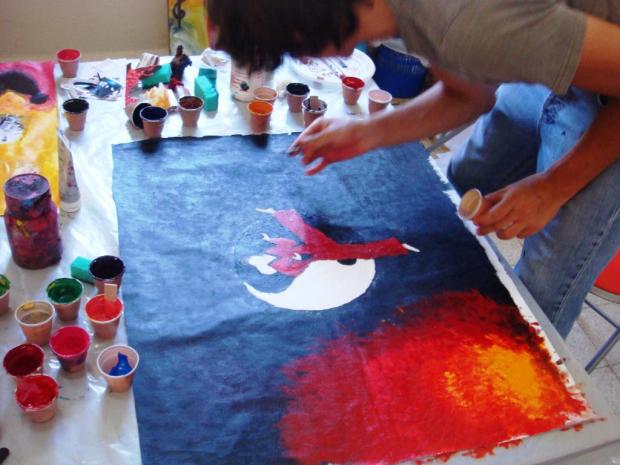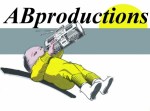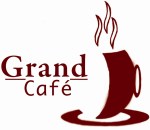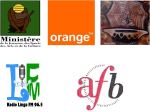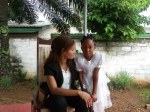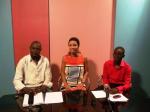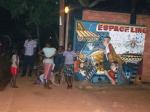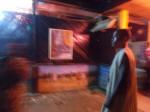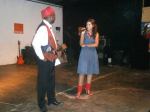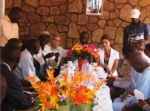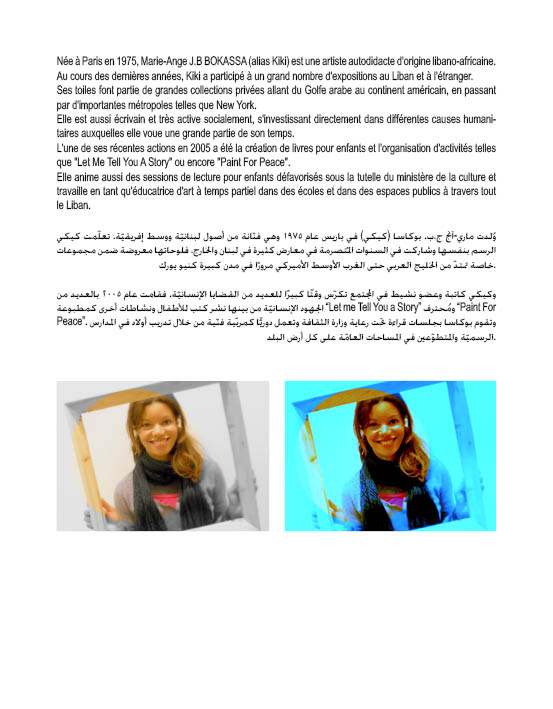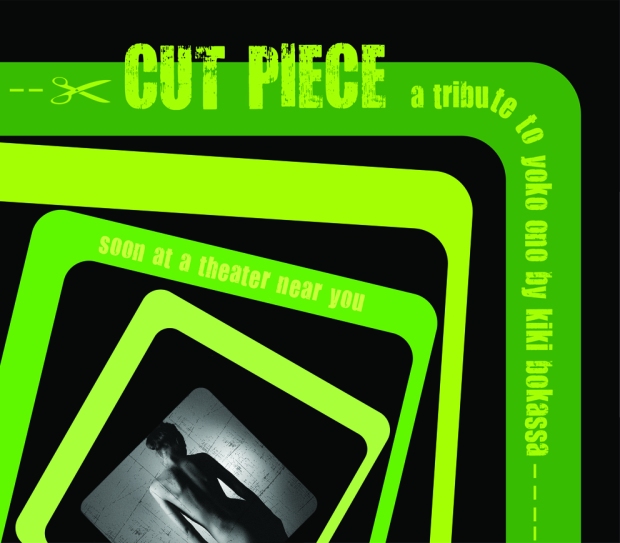33.888629
35.495479
an exquisite visit to RCA
Kiki est élue par de multiples membres de la scène culturelle a Bangui et cela durant une soirée cérémonial organise en son honneur, ambassadrice des artistes plasticiens Centrafricains auprès de la France et de la région du MENA.
“J’ai le coeur qui bat à 150 à l’heure, je suis toute émue. C’est l’un de mes rêves qui se réalise, et je vous en remercie pour votre contribution. » C’est en ces mots que Kiki BOKASSA s’est exprimée le samedi 18 août 2012 lors de la soirée culturelle organisée en son honneur à Bangui, capitale de la République Centrafricaine.
En 2009, lors des VIèmes Jeux de la francophonie tenus à Beyrouth, la délégation Centrafricaine rencontre Kiki, une artiste plasticienne Libano-Centrafricaine. Trois ans plus tard, BOKASSA est invitée à Bangui du 8 au 23 août 2012, une initiative parrainée par le Ministère de la Jeunesse, des Sports, des Arts et de la Culture, ainsi que par ses partenaires.
Quinze jours durant, où Kiki, redécouvrant le pays, ses paysages et traditions, rencontre et échange avec des poètes, des peintres et artistes de tout bord qui l’introduisent à la scène artistique et culturelle contemporaine. Elle donne également un point de presse en présence des médias publics et privés.
Point d’orgue de la visite de BOKASSA, est la soirée officielle et artistique organisée en son honneur avec des représentations du Ballet National, de Zokela Hity MA Hity, du Prince BANGUI TOUMBA et les OTRACOSA, ainsi que des artistes de théâtre, du conte et de la danse. Des spectacles généreusement donnés et personnalisés pour Kiki, qui se voit proposer le titre de « porte parole des artistes plasticiens Centrafricains », assurant ainsi le lien entre les artistes du Liban et de la Centrafrique en y ramenant des projets artistiques et culturels. Une exposition des toiles de Kiki et d’artistes plasticiens s’est tenue en parallèle avec la soirée.
Une heureuse visite, première d’une longue série de manifestations qui promeuvent les arts et la culture de Centrafrique. C’est d’ailleurs en ce sens que Kiki BOKASSA émet sa plus profonde gratitude aux initiateurs, partenaires et collaborateurs sur sa visite, et remercie l’équipe du Ministère de la Jeunesse, des Sports, des Arts et de la Culture, ainsi que son Excellence le Ministre Jean Serge BOKASSA, M. Vincent MAMBACHAKA et l’ONG Espace Linga Tere, M. Alex BALLU et AB Monday, October 29, 2012productions, l’Association des journalistes culturels et communicateurs de Centrafrique, M. Alain DIAB, propriétaire du Grand Café, ainsi que M. Adelin MÉTAIRIE et l’Alliance française de Bangui. Également, Kiki adresse ses profonds remerciements aux medias Centrafricains (radio, tv) y compris la chaine de télé nationale TVCA, ainsi qu’a tous les hebdos (journaux, magazines) , aux quotidiens indépendants d’information générale, en citant certains notamment « L’Hirondelle », « Le démocrate », « Le confident »,« On dit quoi », le journal de l’humour et de l’actualité vu par la rue et pour la rue. Chaleureux remerciements et profonde gratitude aux personnalités philanthropes (Mr. Y. S.), sociopolitiques et surtout aux artistes de la soirée culturelle pour leur généreuse contribution, et pour tous les compatriotes artistes rencontrés.
“Mieux vaut tard que jamais” est l’expression consacrée!
Beirut Lebanon, 29-10-2012-Communique PR
Publie sur ce site par Zeina Dabbous (communication coordinator)
Redaction Hadi Damien (media coordinator)
**********************************************************************************************************
expressive liberation-a compilation of previous & current artworks
you can click on the pdf link to view the draft including a compilation of artwork displayed in Expressive Liberation (a catalog medium) that is being published also with the support of the Lebanese Swiss Bank.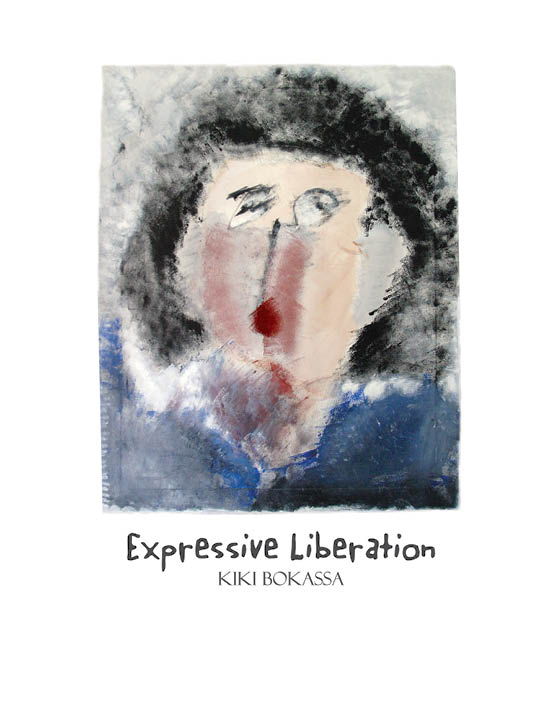
‘2003’ a visit to remember from rca to zico house

 ” bangui en attendant la pluie”. This was the title of the painting inspired by my first visit to central africa in 1994. The red dust, parrots on the street and tropical rain are all a memorable atmospherical bouquet of a day in bangui. 3 weeks ago I came back from my second trip there,it’s true that 20 years have passed but the atmosphere is still the same and rca is greener than any other country i’ve seen. The drop of water in the painting could represent hope. Hope for a better tomorrow to all the people of the continent. zico house is where the first oil show i held took place,the old house transformed into a gallery space has become through time, one of Lebanon’s cultural landmarks. You can find more about this collection in the past production page.
” bangui en attendant la pluie”. This was the title of the painting inspired by my first visit to central africa in 1994. The red dust, parrots on the street and tropical rain are all a memorable atmospherical bouquet of a day in bangui. 3 weeks ago I came back from my second trip there,it’s true that 20 years have passed but the atmosphere is still the same and rca is greener than any other country i’ve seen. The drop of water in the painting could represent hope. Hope for a better tomorrow to all the people of the continent. zico house is where the first oil show i held took place,the old house transformed into a gallery space has become through time, one of Lebanon’s cultural landmarks. You can find more about this collection in the past production page.
Kiki Bokassa and the Art of Living
 Check out Now the latest interview I had, held by a very special person who’s behind the concept of taste culture. Interview found at www.tastekulcha.com
Check out Now the latest interview I had, held by a very special person who’s behind the concept of taste culture. Interview found at www.tastekulcha.com
http://www.tastekulcha.com/kiki-bokassa-and-the-art-of-living/
Thank you Simba Russeau!!
DUBLIN CONTEMPORARY 2011 : Une manifestation très politique
3 trains to reach Haarlem at breakfast time
In some cases, words cannot describe most of our reflections but in others the mood of a picture can. During a fortunate rencontre over breakfast in Haarlem, with one of the most lovable artists i’ve ever met (it’s not that others i’ve met are less lovable it’s just that I haven’t met many yet), I stood, sat, stared and didn’t dare to comment on any detail my eyes laid sight on. Sometimes we feel speechless about heavy issues other times we feel the same about the issues we like. Vera Bruggeman is the name of our host, she’s Piet Van Steenis’ friend and Piet’s my friend. Carol, an old classmate and close friend from Beirut went all the way with me this summer, to meet Piet, Vera and Holland. There were many tentatives from my part to make Carol be less enthousiastic about touring the whole Amsterdam city,along with its touristic sites and cliches, but my arguments I guess, were not convincing enough.To me, Haarlem always felt like an ideal residential city to spend quality time in, especially by the market, lake and square district.
It’s true that our visit to see Vera was not intended to be productive in the sense where we planned on working with our hands,but it quickly turned that way though with my eyes half closed….for waking up early that morning, nothing much could be done…other than a guaranteed Fun. She had a technique that many of the children I worked with in Southern Lebanon knew,which was to paint on two different canvasses, let one kiss the other for a few minutes as she described it, with a facial expression to make it clearer..talking half Deutsche half English. Vera suddenly removed one small square painting from the other with a look that I interpreted as ” this simple technique will get us a quick surprise effect…. Guess what? Each of the two paintings has a new motif” .
Vera’s dog, the colors and light at her workshop along with her good spirit and delicious home made cake, made our day and happy we stayed till Thursday, the day we left Haarlem to go back to Paris, via Amsterdam. The book I read by Kyochi Katayama was my companion for the whole trip, between romantism and dramatism I had to visit the tgv mini bar, to order a glass of wine, and on the way visit the wc. The speed of the train was fast enough to make me loose my balance while walking between cabins :).
After Brussels comes Paris and “nous voila” there we are, back to Rue de Rome, where the train moving back and forth towards Gare du Nord, appears to us every day of those 2 weeks spent at the 17eme. So many art shows to see, so many people to meet, not long after Haarlem, we started feeling nostalgic. In Paris, there’s not enough time to enjoy a cup of tea and home made cake. The beautiful summer weather would incite us to sit at the terrace of a cafe, like other clients, scan most fashion victims passersby, arguing or holding hands, walking the dog or french kissing in a humanly or mechanical way when kissing their phones, hooked to their face. We sipped our sour espresso, backed up with a glass of tab water and a french menthol Bonbon left on the small round table with the check note.. The waiter would always make it clear that we’ve been sitting for too long while others are waiting to take our seat. A tip of a euro could make him smile again! After coffee I love Paris.
Will my tribute for “Cut Piece” ever see the light? If yes,in Paris or Beirut?
 I have been thinking since 2 years now of paying tribute to a 1964 Yoko Ono performance. In one of the city theaters, I will wear a painted dress, and ask spectators, each in turn, to cut a piece of this dress (made during the 72-hour performance). The cutting of the painted dress is intended as a pacific protest against all forms of violence anywhere in the world. Half the dress will represent human life, the other half, our environment.
I have been thinking since 2 years now of paying tribute to a 1964 Yoko Ono performance. In one of the city theaters, I will wear a painted dress, and ask spectators, each in turn, to cut a piece of this dress (made during the 72-hour performance). The cutting of the painted dress is intended as a pacific protest against all forms of violence anywhere in the world. Half the dress will represent human life, the other half, our environment.
“Now I wish that Yoko Ono will approve of the project,for me to realise a dream that I long have had thoughts for”.
Extracts of the early brainstorming communication that took place with Lebanese young student Ramzi Hibri:
excuse my tardiness, yesterday was very hectic.
so we have made a concrete decision that cutpiece is an interactive theatrical instillation with a choreographed sequence of events merging different media in adherence to the fluxus ideologies.
cutpiece revolves around the gradual shedding of whatever is covering the centerpiece, which would be you.
this shedding is in dedication to peace. in dedication to the process of destruction that humanity has engaged in, from which, as cutpiece proposes through the cutting, should emerge a pure and uncorrupted bieng, innocent in it’s nakedness whcih is represantative of it’s faith in humanity. to postpone our eventual demise, to embraced the harmony that very well could be, but isn’t.
the audience steps into a transformed space filled with a mass surrounding the centerpiece, blocking them from it. they are given cutting apparatuses and they are lead to destroy everything obstructing their path towards the centerpiece. this mass could be exaggerated extensions of the dress that you will be wearing; unto which various videos and photographs of humanity’s obscenities are projected, they could be written on the dress, drawn on it, even preformed upon it. i suggest that there be various actors surrounding the area, narrators who may suggest the message through various texts written by participating writers. the actors can run within the set as a medium to elevate tension or encourage the audience. interacting with the performers are musicians whose music, which is a sustained element in the play, will describe the sequence of events. it may begin with a dronish backdrop and then intensify with apocalyptic distorted noises and rapid percussions and finally end with harmonious pulsating strings and a melody in a major key.
i think you should be completely naked but seated in a fetal position (which will reduce your body’s exposure while reinforcing the element of innocence, the purity of what exists within the dress).
let’s discuss the logistics and design details as soon as you read this.
i already have various individuals in mind for certain positions in the piece.
im just proposing a general outline.
Extract from a review published about the last Cut Piece performance held in Paris by my favorite conceptual artist Yoko Ono:
“I” whispered thanks to my absent friend Phillip Ward—coeditor of the world poetry anthology Van Gogh’s Ear (www.frenchcx.com) that I edit here in Paris—for having told me about this top secret event in time to get on the guest list, I applauded long and loud enough for the both of us. Applause filled the theatre as the memory of Phillip’s 5th of September telephone call from New York City rang in my ears. The second he was sure I was me, he’d said, “Are you sitting down?” Something in his sonorous voice told me the news was too thrilling to send in an email. Earlier in the week, Phillip had asked Yoko Ono’s studio and production assistant, Robert Young, if he’d ask Yoko about contributing some work to our upcoming edition of Van Gogh’s Ear. It wasn’t long before Robert contacted Phillip to echo Yoko’s answer, her famous, “Yes.” Not only would she contribute several poems—but a few of her Franklin Summer drawings, too! This news hit me like a shot of some euphoric drug. Little did we suspect, when we began our small non-profit enterprise, that we’d be entrusted with the works of such great talents as Yoko Ono, Norman Mailer and Thich Nhat Hanh. My enthusiasm led to Phillip informing me more about Yoko Ono’s art and music, and to her mind-altering “Fluxus.”
I knew that John Lennon once said Yoko Ono was the world’s “most famous unknown artist. Everybody knows her name, but nobody knows what she does.” When Phillip mentioned Yoko being one of the founding members of Fluxus, I said, “What’s Fluxus?”
“Fluxus,” he offered, “began as a group of writers, musicians and artists organized by George Maciunas, whose 1963 Fluxus manifesto incites artists to—Here, I’ve got it right here: ‘purge the world of bourgeois sickness, intellectual, professional and commercialized culture…dead art, imitation, artificial art, abstract art, illusionistic art…to promote a revolutionary flood and tide in art, to promote living art, anti-art…non-art reality to be grasped by all peoples, not only critics, dilettantes and professionals.’ So they created an art form that was anti-elitist, anti-commercial. Utilizing readymade materials and experimenting with various art forms, they created something that was part Dada, part Bauhaus and part Zen.”
Phillip explained that over the last 40 years, Fluxus artists produced interesting installations and limited edition publications, teasing the mind in cartoon fashion, yet in a minimalist and philosophical manner, while encouraging thought and dissection. In her association with Fluxus, Yoko Ono staged performances in Japan, England, and the United States. She hosted art and music Happenings in her SoHo loft. While at the same time making films, composing music, and creating paintings and books. Even today, Yoko continues to execute Fluxus concepts and philosophies behind her art form.
“Her inventive sometime provocative game-like concepts and instructions encourage us to step over the boundaries of art’s constraints to construct art inside ourselves,” Phillip continued. “She brings to the mind a challenging concept: Trust. This is demonstrated clearly in her chess piece, titled Play it by Trust. All the pieces, including the checkered grid, are painted white. According to Yoko, white is the most conceptual color. Being a metaphor for light and transcendence, it doesn’t interfere with your thoughts.
“Yoko’s works are to be performed by a viewer or an audience member. Many to be performed only in the participant’s mind. These concepts also compliment Marcel Duchamp’s belief that art is only partly created by the artist and is completed by the spectator. Incidentally, Dada artist and philosopher Duchamp was himself an active Fluxus contributor and participant in many Fluxus ‘Happenings.’”
Phillip—saying that Yoko Ono is one of the most pioneering avant-garde artists of our time—then encouraged me to go experience her Women’s Room exhibit, on view at Paris’ Musée d’Art Moderne. He mentioned how, with patience and imagination, “Yoko’s art is as rewarding as it is demanding,” then added an idea that now fascinates me: “Transforming art into thought.”
I will pay tribute to a 1964 Yoko Ono performance. In one of the city theaters, I will wear a painted dress, and ask spectators, each in turn, to cut a piece of this dress (made during the 72-hour performance). The cutting of the painted dress is intended as a pacific protest against all forms of violence anywhere in the world. Half the dress will represent human life, the other half, our environment.
Q & A – exposition “Dieci”
Questions par Chirine Lahoud–
1. Pourquoi le symbole de l’oiseau revient-il sur deux de vos peintures?
L’oiseau est le symbole de la liberté. Je pense que les événements de la région ont indirectement influencé mon travail : les peuples qui se rebellent, la chute des dictateurs, etc. Et par la peinture je me libère, je me détache de ce qui se passe autour de moi et je me connecte avec la toile. D’autre part je suis en phase de transition entre le figuratif et l’abstrait, l’oiseau c’est comme si je me libère de ce qui était inutile dans les toiles, comme les petits détails qui étaient présents mais qui n’ajoutaient pas grand-chose. C’est surtout la liberté et la légèreté en même temps.
2. Pourquoi avoir choisi ce mélange inhabituel de peinture, spray et voiles?
Cette année j’ai été très influencée par les arts de la rue, notamment le graffiti, parce que c’est un medium utilise par la nouvelle génération, mais qu’on ne trouve ni sur les pièces de collection, ni dans les galeries ou les salles d’exposition. Du coup, j’ai allie ce medium qu’on trouve toujours sur les murs de la rue avec le motif de la dentelle et l’ai affiche sur des tableaux. En d’autres termes, c’est un mélange de dentelle (qui représente le traditionnel) et de spray can (qui représente l’esprit des jeunes). Quant au voile, c’est la nappe des tables à café que les gens utilisaient dans leurs maisons. Ces nappes me rappellent de mes souvenirs d’enfance et des traditions des gens. Le tissu utilisé dans mes toiles provient des souks de Tripoli, une ville qui fait partie de ma source d’inspiration, une ville dans laquelle on peut toujours trouver ses anciennes traditions. C’est pourquoi Dieci est en quelque sorte une alliance entre l’expressionisme moderne et les motifs traditionnels qui sont en symbiose. C’est une forme d’abstrait figuratif.
3. Que voulez-vous transmettre au public par vos œuvres?
La paix et la sérénité. Un retour aux habitudes des mémères, comme quoi les jeunes à travers les graffitis, et les grand-mères à travers le napperon peuvent se retrouver. De plus, Tripoli par ses souks, ses artisans et sa main d’œuvre a ainsi pris part au travail, puisqu’elle a contribué à l’inspiration.
4. Pourquoi ne pas avoir donne de titres a vos œuvres? Est-ce pour ne pas influencer les spectateurs ?
Chacun interprète la toile à sa manière. Les gens voient différemment ce que la toile porte en elle, et souvent les gens projettent sur la toile ce qu’ils ont en eux. Leurs pensées, leurs désirs, leur inconscient. Donner un nom à la toile serait en quelque sorte limiter le spectateur dans son interprétation et dans son évasion.
5. Que ressentez-vous quand vous travaillez sur une nouvelle œuvre?
C’est comme une phase de méditation par laquelle je passe. Les souvenirs de l’enfance me reviennent et j’ai une vision du futur qui est bien présente.
Dieci Album-Tripoli inspired artworks 011
My new series entitled “Dieci” is a collection of 10 mixed media paintings, made with oil paint and graffiti spray cans. Some portions in most of the artwork are shrouded with fabric veils. These fabric veil patterns are inspired by tablecloth that people used to display on coffee tables. They remind me of my childhood memories and of people’s traditions. The fabric used for this collection is brought from the souks of Tripoli, a city in the North of Lebanon.“Dieci” is in a way an alliance between modern expressionism and traditional motifs that are in symbiosis. It is a form of figurative abstract.
